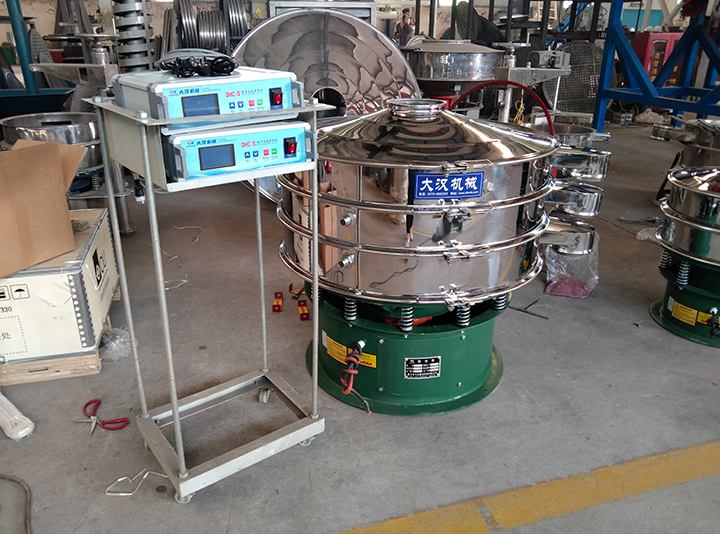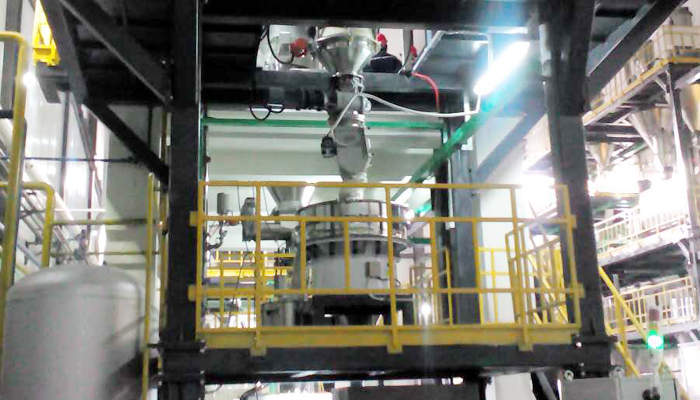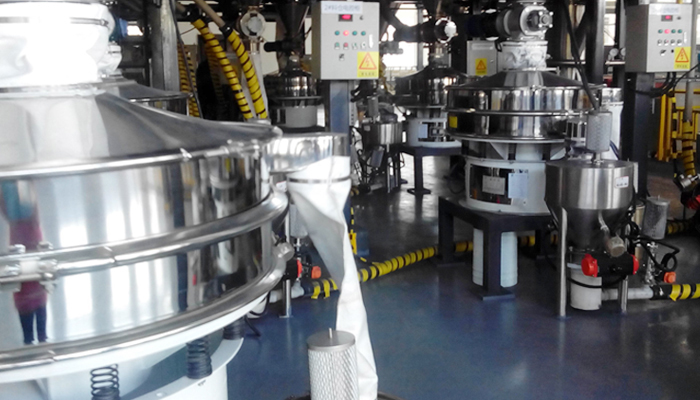The Ultrasonic Powder Sieving Machine is a cutting-edge device for processing high-fine, high-value-added powders. Its core value lies in solving the sieving challenges of extremely fine powders 400 mesh (38 microns) and above. This device offers exceptional performance in mesh size and grading, with standard sieve sizes typically ranging from 100 mesh (150 μm) to a staggering 600 mesh (23 μm). Special designs can even meet ultra-fine grading requirements of 800 mesh (15 μm) and above. An ultrasonic generator converts high-frequency electrical signals into mechanical vibrations, which act directly on the sieve, instantly disrupting the powder's surface tension, static electricity, and frictional adhesion. This ensures that even at the finest mesh sizes, the mesh remains unobstructed, enabling clear and precise particle grading and effectively separating impurities and agglomerates.

The Ultrasonic Powder Sieving Machine is a highly efficient sieving device developed to address the challenges of ultrafine powder sieving. This system integrates a traditional vibrating screen with an ultrasonic vibrating sieve system. This system transmits high-frequency ultrasonic energy to the screen mesh through an ultrasonic mesh cleaning system, causing the material to vibrate tens of thousands of times on the screen surface. This principle effectively prevents clogging, adhesion, and agglomeration, maintaining smooth screening. The device's excitation source can be a high-frequency motor or a dedicated ultrasonic driver, with flexible adjustment of amplitude and frequency to achieve high-frequency sieving. Compared to traditional screening machines, ultrasonic screening equipment significantly improves classification accuracy and throughput, making it particularly suitable for screening lightweight powders and ultrafine materials.
This equipment typically accommodates 1–6 screen layers with a mesh size range of 2–500, enabling multi-stage classification and impurity removal. The processing capacity of a single unit ranges from tens to hundreds of kilograms per hour, depending on the screen diameter, number of layers, and material properties. In fine powder screening and micro powder separator applications, accuracy can be improved by 1–70%, significantly enhancing product consistency and purity. Common powder screening applications include metal powder screening, pharmaceutical powder sieving, chemical powder classifiers, and food grade sieving machines. Furthermore, the equipment can be equipped with a sealed cover and automatic screen cleaning device to ensure stability and cleanliness during continuous operation. By optimizing vibration parameters, the high-precision screening machine maintains high accuracy while reducing energy consumption and noise.


The Ultrasonic Powder Sieving Machine has a wide range of applications. In the pharmaceutical industry, it is commonly used for the precise sieving of drug powders, excipients, and traditional Chinese medicine powders, ensuring stable and safe drug production. In the food industry, this equipment can efficiently process milk powder, flour, starch, and other materials, often referred to as a starch ultrasonic separator or food grade sieving machine, ensuring product uniformity and hygienic standards. In the chemical and metallurgical fields, it can easily perform fine classification of powders such as calcium carbonate sieving machines, silica micropowder, and carbon black (carbon black ultrasonic sieve). In the new materials industry, particularly in 3D printing and powder metallurgy, 3D printing powder sieving technology provides metal powder with highly fluid and uniform particle size, ensuring high-quality molding. The flexible configuration of the multi-layer ultrasonic sieve system allows the equipment to meet diverse material characteristics and process requirements.
Address:China,Yanjin county forest park gate to the west 1000 meters north road.